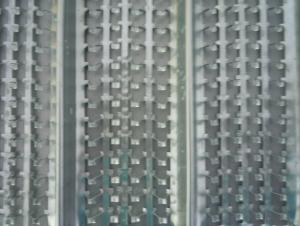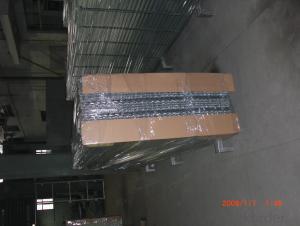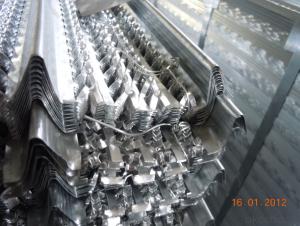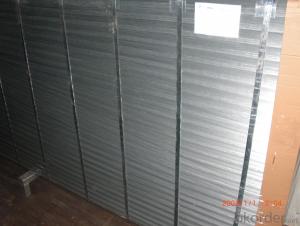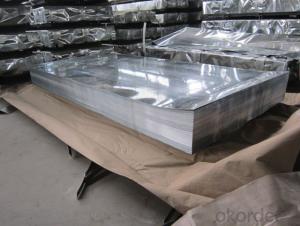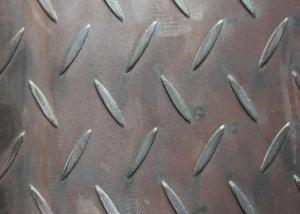GAVANIZED HIGH RIB LATH
- Loading Port:
- China Main Port
- Payment Terms:
- TT OR LC
- Min Order Qty:
- -
- Supply Capability:
- -
OKorder Service Pledge
OKorder Financial Service
You Might Also Like
GAVANIZED HIGH Rib Lath is widely used as plaster backing on ceilings, walls and stud partitions.
Rib Lath is also ideal for refurbishing damaged or aged masonry walls when a key for rendering is not certain due to disintegration or softening of the wall face. Manufactured in galvanized steel to BS EN 10143:1993 with quality Zinc coating G60. Complies with BS 1369 Part 1:1987 specification for expanded metal and ribbed lathing.
1.Material:Hot-dipped galvanized sheet
2.Application:
Construction formwork mesh has very good engineering quality and construction security;
Construction formwork mesh as the concrete permanent assembly
free sheet is much convenient for engineering design and processing;
Construction formwork mesh is widely used in tunnels,bridges and valve system and so on to make the process of construction much more fast and stable.
ZINC coating G40
weight per roll: 4.5KG/SHEET
- Q: What is the maximum size of steel sheets available?
- The maximum size of steel sheets available can vary depending on the manufacturer and specific requirements, but generally, they can reach dimensions of up to 12 feet in width and 40 feet in length.
- Q: Can the steel sheets be used for storage cabinets?
- Yes, steel sheets can be used for storage cabinets as they are durable, strong, and provide excellent protection for stored items.
- Q: Can steel sheets withstand extreme temperatures?
- Yes, steel sheets can withstand extreme temperatures. Steel has a high melting point and is known for its excellent heat resistance, making it suitable for use in various industries that require materials to endure extreme temperatures.
- Q: Are steel sheets resistant to seismic activities?
- Steel sheets can provide some level of resistance to seismic activities due to their strength and flexibility. However, their seismic resistance depends on various factors such as the thickness and quality of the sheets, the building design, and the overall structural system. Proper engineering and construction techniques, including the use of appropriate reinforcement and connections, are crucial to ensure the steel sheets effectively withstand seismic forces.
- Q: What are the standard dimensions of steel sheets?
- The standard dimensions of steel sheets can vary depending on the specific application and industry requirements. However, common standard dimensions for steel sheets typically include thicknesses ranging from 0.5mm to 25mm, widths ranging from 600mm to 2000mm, and lengths ranging from 2000mm to 6000mm.
- Q: Can the steel sheets be used for decorative purposes?
- Yes, steel sheets can definitely be used for decorative purposes. Steel sheets can be customized and shaped into various designs, patterns, and sizes to suit different decorative applications. They can be used for creating unique and modern architectural features, such as ornamental facades, decorative wall panels, or intricate metal screens. Steel sheets can also be used for decorative furniture, art installations, and sculptures. Their versatility, durability, and sleek appearance make them a popular choice for adding a touch of elegance and sophistication to both interior and exterior spaces.
- Q: Are the steel sheets suitable for electrical applications?
- Yes, steel sheets are suitable for electrical applications as they have good conductivity and can be easily shaped into desired forms for various electrical components.
- Q: Are the steel sheets suitable for water tank fabrication?
- Yes, steel sheets are suitable for water tank fabrication. They are durable, corrosion-resistant, and can withstand the pressure and weight of the water. Additionally, steel sheets can be easily shaped and welded, making them an ideal choice for constructing water tanks.
- Q: What is the typical thickness tolerance for steel sheets?
- The typical thickness tolerance for steel sheets can vary depending on the specific industry and application requirements. However, in general, the standard thickness tolerance for steel sheets is typically around ±0.005 to ±0.010 inches (0.13 to 0.25 mm). This means that the actual thickness of the steel sheet can deviate within this range from the specified nominal thickness. It is important to note that certain industries or applications may have more stringent tolerance requirements, especially when precision is critical. In such cases, the tolerance may be tighter, ranging from ±0.001 to ±0.003 inches (0.025 to 0.076 mm). Additionally, specialized steel products or specific customer requirements may also result in different tolerance specifications. To ensure compliance with the desired thickness tolerance, manufacturers employ strict quality control measures such as precise calibration of equipment, regular inspection of raw materials, and comprehensive testing procedures. This helps to maintain the integrity and reliability of steel sheets for various applications in industries such as automotive, construction, manufacturing, and more.
- Q: What are the different edge finishes available for steel sheets?
- Depending on the desired aesthetic and functional requirements, steel sheets offer various edge finishes. The most common options are as follows: 1. Mill Edge: Directly from the steel mill, this is the standard and unfinished edge. It is typically used in non-critical applications like industrial or structural use. 2. Trimmed Edge: Irregularities and burrs are removed by trimming or shearing the rough mill edge. This provides a cleaner and more uniform edge, making it suitable for applications where appearance matters. 3. Deburred Edge: Through a deburring process, sharp or jagged edges are eliminated, resulting in a smooth and rounded edge. This enhances safety, making it common in applications involving frequent handling or contact. 4. Beveled Edge: The edge is cut or ground at an angle, creating a sloping or chamfered edge. This improves both aesthetics and functionality, especially in architectural applications and jointing or welding. 5. Rolled Edge: By rolling or bending the steel sheet's edge, a rounded or folded edge is formed. Rolled edges provide a smooth and finished appearance, making them ideal for visible applications like decorative or furniture manufacturing. 6. Hemmed Edge: Folding the edge of the steel sheet over itself creates a double-layered and durable edge resistant to fraying or unraveling. Hemmed edges are commonly used in exposed areas that require added durability, such as roofing or sign manufacturing. These examples demonstrate the range of edge finishes available for steel sheets. Each finish offers unique characteristics and benefits, allowing for customization based on specific requirements and preferences.
Send your message to us
GAVANIZED HIGH RIB LATH
- Loading Port:
- China Main Port
- Payment Terms:
- TT OR LC
- Min Order Qty:
- -
- Supply Capability:
- -
OKorder Service Pledge
OKorder Financial Service
Similar products
Hot products
Hot Searches
Related keywords
